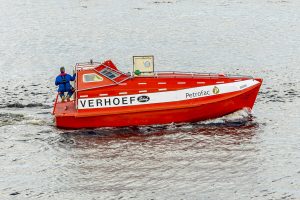By Marit Aure

Marit Aure
Marit Aure is a co-investigator in On the Move. She is Professor of Gender Studies in Sociology, at UiT The Arctic University of Norway. Marit does research and publishes nationally and internationally on work-related mobility, migrant integration, participatory art-based action research, elderly people, gender and equality, masculinities and fathering, place attachment and community studies. She is the Principal Invetisgator of Sustainable Diverse Cities: Innovation in Integration, and is involved in several international projects in the field of mobility including On the Move.
The response to the COVID-19 threat has varied significantly across countries including within Scandinavia and across European countries. Norway, like Denmark and Iceland, and in contrast to Sweden, moved relatively quickly starting on March 12th to limit mobility into and within the country (Franks, 2020). Indeed, Norway’s measures initiated on March 12th were described by its Prime Minister as “the most far-reaching measures Norway’s population has ever experienced in peacetime”(Brzozowski, 2020).
In Norway, airports and ports were very restricted except to returning Norwegians and goods transport; many flights have been cancelled and ships carrying international tourists have not been welcomed. Schools, universities, daycares and many other public institutions were closed with those who could working from home. Norway has also carried out widespread testing for COVID-19. All hairdressers, dentists, and other one-to-one personal services, as well as bars not serving food, were forced to close while most shops have closed due to the lack of customers, quarantines and general restrictions put on citizen mobility. People are not allowed to go to their cottages or second homes, and Norwegians who do not self isolate after travelling or follow the national regulations can be fined.
 Norwegian seafarers were among those hit hardest by mobility constraints and following layoffs and unemployment (Dinh, 2020). Norway’s oil industry is considered essential to the economy and continues to operate. The resource extraction part of the industry relies on mobile workers who work rotating shifts to keep the rigs going and on workers who provide essential services to these employees. Mobile workers run the risk of infection and of spreading the disease not only at home, but also en route to and from the platforms, and at work. Platform workers come from outside Norway and from different regions within the country. Companies and local as well as national authorities have taken measures to quarantine mobile workers and extend rotations. Different local municipalities as well as the companies have adopted a wide variety of approaches and regulations in this situation.
Norwegian seafarers were among those hit hardest by mobility constraints and following layoffs and unemployment (Dinh, 2020). Norway’s oil industry is considered essential to the economy and continues to operate. The resource extraction part of the industry relies on mobile workers who work rotating shifts to keep the rigs going and on workers who provide essential services to these employees. Mobile workers run the risk of infection and of spreading the disease not only at home, but also en route to and from the platforms, and at work. Platform workers come from outside Norway and from different regions within the country. Companies and local as well as national authorities have taken measures to quarantine mobile workers and extend rotations. Different local municipalities as well as the companies have adopted a wide variety of approaches and regulations in this situation.
Corporate Responses:
International migrant workers from some countries (i.e., Denmark and UK) have to spend 14 days self-isolating before they are allowed offshore. These workers are being put in hotels and given three daily “lunch packets” but regulations related to whether they receive food allowance and payment for this time vary and are unclear. This quarantine rule does not apply to workers from Sweden and Finland, which has caused some concern for workers who are affected (Strangeland, 2020).
Based on personal communications with people in the industry, some companies have decided that internally mobile workers who have to pass through the national airport hub at Gardermoen will have to stay in quarantine at a hotel near the heliport for a week before travelling offshore. Because of special regulations in some local authorities, especially in Northern Norway, but also in peripheral municipalities across the country, they might also have to undergo 14 days of quarantine after they return home.
Given these pandemic-related requirements, several offshore oil and gas companies are negotiating with unions to temporarily extend the offshore stays, and also change the rotations from, for example, two weeks on/four weeks off to three weeks on/six weeks off to allow people more time to quarantine with less impact on their lives at home (Seglem, 2020).
How are workers dealing with these requirements?
 Oil worker Pål Grambo is choosing to drive 700 km to work instead of flying because he is concerned that planes won’t be flying in 14 days when he is due to return and he’ll be stuck in Sola (where the helicopter leaves for the offshore) (Solem, 2020). Another worker is known to be opting to drive 1800 km to work in order to avoid the need to self isolate in a hotel in Sola if he opts to fly through the national airport hub. He reported that in the winter a heavy snowstorm closed the road over the mountain causing a delay of 24 hours and a delay for an extra day at the heliport.
Oil worker Pål Grambo is choosing to drive 700 km to work instead of flying because he is concerned that planes won’t be flying in 14 days when he is due to return and he’ll be stuck in Sola (where the helicopter leaves for the offshore) (Solem, 2020). Another worker is known to be opting to drive 1800 km to work in order to avoid the need to self isolate in a hotel in Sola if he opts to fly through the national airport hub. He reported that in the winter a heavy snowstorm closed the road over the mountain causing a delay of 24 hours and a delay for an extra day at the heliport.
Other workers tell of other rules, and unclear regulations with regard to quarantine, but also related to such things as payments and insurance coverage. An offshore ferry operator, Harald Vindvik, lives in Meløy municipality, which has its own local rules (as do many other municipalities) asking residents who have travelled at all to self-isolate for 14 days. Vindvik has done this and in this article, he shares the policies used offshore to maintain physical distance between employees (Berbusmel, 2020).
The financial costs of adhering to quarantine and self-isolation requirements seem to be mostly covered by the companies for Norwegian workers in permanent positions, but there are some questions about whether the companies will also pay for the delays caused by these measures and the time spent in quarantine. For foreign workers, hired workers and workers on temporary contracts the situation is unclear and thus these measures may hit the most precarious workers hardest.
Local authorities claim that they will grant exemptions if their local regulations cause harm and while the petroleum industry is considered to be of vital national interest these days, this system of exemptions requires special applications and does not seem to work well for all individual workers living across the country, working for a number of different companies, each with their own regulations.
New inequalities and family implications?
Previous research within the On the Move partnership has shown how offshore shifts influence family life in Canada and in Norway (Aure, 2018; Aure and Munkejord, 2016; Dorow and Mandizadza, 2018; Walsh et al., 2013). It has documented impacts on the fathering practices of men in mobile work in the petroleum industry in Norway (Aure, 2018). The situation triggered by the COVID-19 pandemic and related measures poses particular challenges for mobile offshore workers. The tri-partite (state, union and employers) regulation of the Norwegian petroleum industry is grappling with rapid changes caused by the diverse municipal and company regulations. These changes may create new inequalities and differentations among workers and have consequences for their families and their parenting.
References
Aure M (2018) Mobile fathering: absence and presence of fathers in the petroleum sector in Norway. Gender, Place & Culture (Journal Article): 1–16. DOI: 10.1080/0966369X.2018.1462769.
Aure M and Munkejord MC (2016) Creating a Man for the Future: A Narrative Analysis of Male In-Migrants and Their Constructions of Masculinities in a Rural Context. Sociologia Ruralis 56(4): 531–551. DOI: 10.1111/soru.12111.
Berbusmel A (2020) Oppdatert: Offshore-retur kan bety hjemmekarantene. Kulingen, 20 March. Available at: https://kulingen.no/offshore-retur-kan-bety-hjemmekarantene (accessed 30 March 2020).
Brzozowski A (2020) Norway takes “most far-reaching measures ever experienced in peacetime”, plan loosening in April. www.euractiv.com, 15 March. Available at: https://www.euractiv.com/section/coronavirus/short_news/norway-update-covid-19/ (accessed 15 April 2020).
Dinh TN (2020) Sjømannsforbundets medlemmer er blant dem som rammes hardest av krisa. FriFagbevegelse, 26 March. Available at: https://frifagbevegelse.no/maritim-logg/sjomannsforbundets-medlemmer-er-blant-dem-som-rammes-hardest-av-krisa-6.158.690845.81d27c4f46 (accessed 15 April 2020).
Dorow S and Mandizadza S (2018) Gendered circuits of care in the mobility regime of Alberta’s oil sands. Gender, Place & Culture 25(8): 1241–1256. DOI: https://doi.org/10.1080/0966369X.2018.1425287.
Franks PW (2020) Coronavirus: why the Nordics are our best bet for comparing strategies. The Conversation, 3 April. Available at: http://theconversation.com/coronavirus-why-the-nordics-are-our-best-bet-for-comparing-strategies-135344 (accessed 9 April 2020).
Seglem E (2020) Nå jobber de 28 dager offshore av korona-frykt. Sysla, 25 March. Available at: https://sysla.no/offshore/a/g7e6rJ/na-jobber-de-28-dager-offshore-av-korona-frykt (accessed 30 March 2020).
Solem TP (2020) Pål jobber offshore: – Lurer på om jeg kommer hjem fra jobb som planlagt. Dagsavisen, 20 March. Available at: https://www.dagsavisen.no/nyheter/innenriks/pal-reiser-offshore-lurer-pa-om-jeg-kommer-hjem-fra-jobb-som-planlagt-1.1685305 (accessed 30 March 2020).
Strangeland G (2020) Riggarbeidere bor 14 dager på hotell uten kompensasjon før de reiser offshore. Energi24.no, March 30. Available at: https://energi24.no/nyheter/riggarbeidere-bor-14-dager-pa-hotell-uten-lonn-for-de-reiser-offshore (accessed 30 March 2020).
Walsh D, Valestrand H, Gerrard S, et al. (2013) Gendered mobilities in the North: Advancing an international comparative perspective. Norsk Geografisk Tidsskrift – Norwegian Journal of Geography 67(5): 260–265.
Photo Source in Order of Appearance:
Alan-Jamieson, “Messing Around in Boats.” CC BY 2.0 https://www.flickr.com/photos/87525421@N06/26712679531
Jcoterhals, “Statfjord oil field, the North Sea.” CC BY-NC-ND 2.0 https://www.flickr.com/photos/28745942@N05/7857286342


Leave a Reply